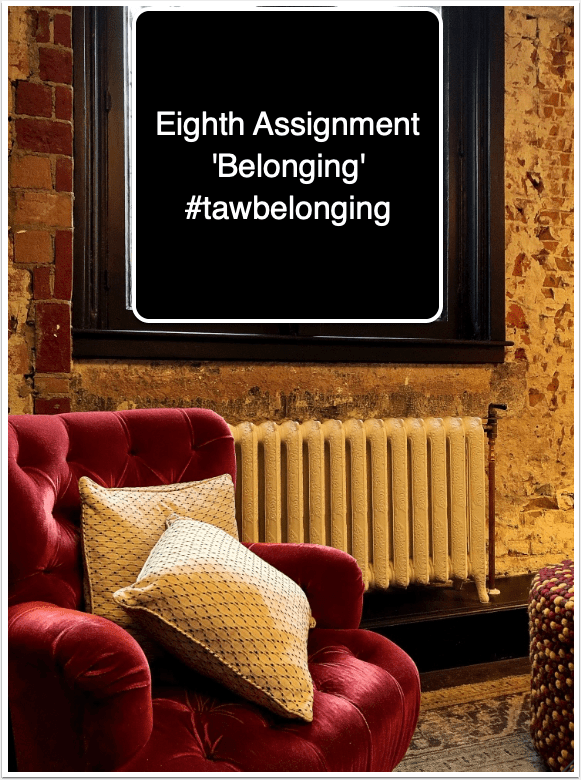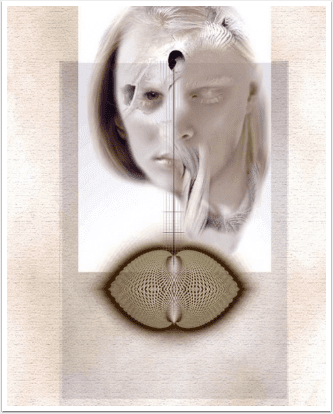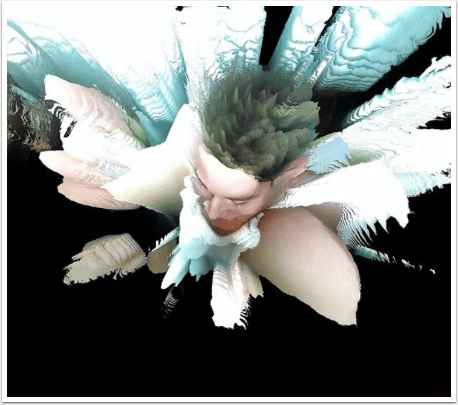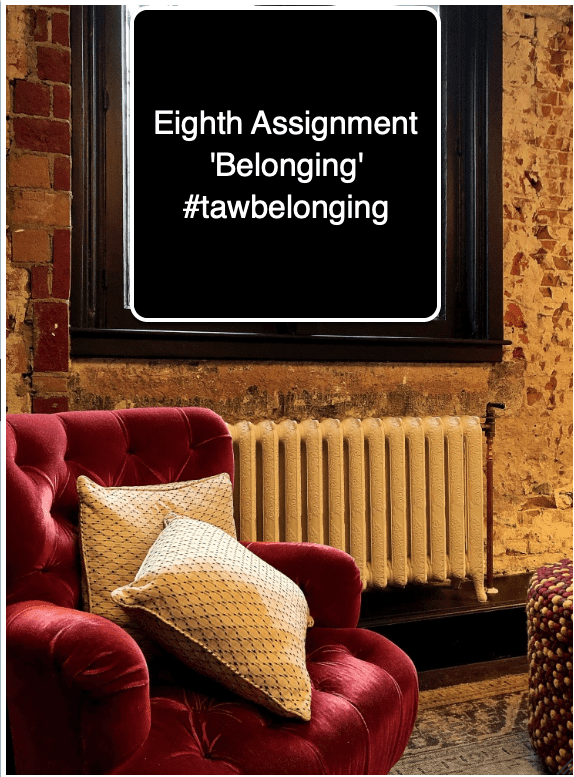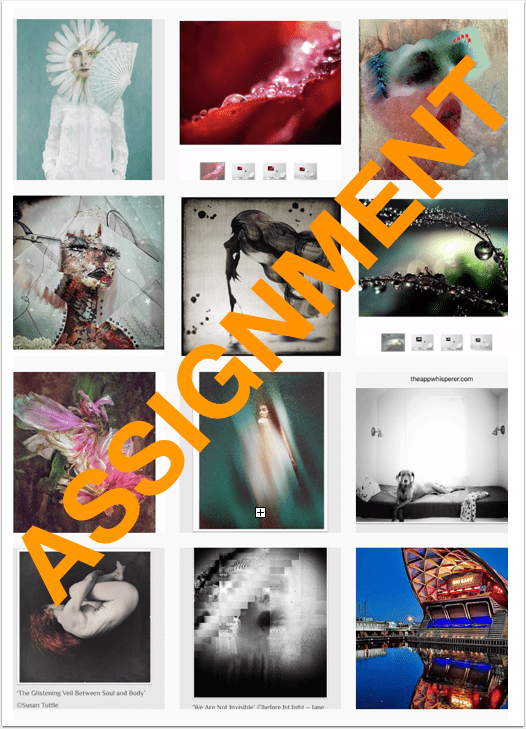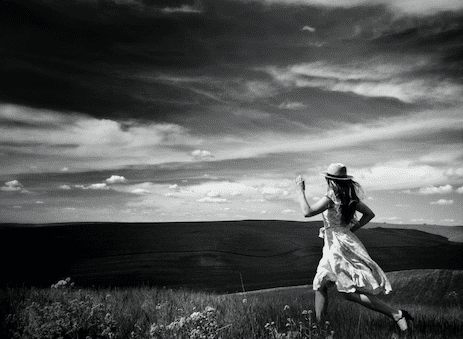
Assignment ‘Ladylike’ – Result and Sixth Essay with Lee Atwell for our Forthcoming Book – Away with Words
With five chapters behind us, we are delighted to publish our sixth chapter for our forthcoming book ‘Away with Words’, this will be published next year.
Our assignment for this chapter was ‘Ladylike’ and we have selected Lee Atwell’s image from the selection we were sent, as we feel it epitomises this subject, for our sixth of twelve 1000 word essays, personally written by myself.
This non fiction work merges discursive scholarship with what may be construed as personal flights of fancy. That is not to say it will disappoint, moreover I have given myself a far and wide range to delve into photography, literature, art, theory, design and music as I tease out my own offbeat associations and at the same time astutely tune into each mobile photographers key tropes and artfully deconstruct their imagery. I thus begin:
What are we looking at?
We are looking at the body of a white woman with long hair, we believe it is the photographer, herself, Lee Atwell. She is facing away from the camera and is looking beyond to the beautiful landscape within her field of vision. The image is monochrome and clearly utilises the defined Zone System. She is wearing a long and flowing summer dress, it is short sleeved. On one of her legs she wears a short white ankle sock and shoe with a clearly determined heel. We assume she is wearing these in pairs but one leg is obscured by long growing wild flowers. She is wearing an off white straw trilby hat on her head. Her left leg is placed on the ground and her right leg is above the ground. Her left arm is raised and her right arm held back. Her dress demonstrates a flowing movement as if she is moving at speed. The positioning of her legs and arms also suggest fast movement, as does her streaming hair. She is in the countryside, at a high elevation. The sky is covered with broken cloud but without rain. The fields appear to be in full growth and wild flowers rise from the earth, we depict it is summertime.

How can the image be interpreted?
We deduce that this female is moving at speed but perhaps because of the heels on her shoes, she is performing more for the camera, as a scene to represent self-expression, rather than going for a more serious professional run.
The title for this chapter of our book ‘Away with Words’ was ‘Ladylike’ and we really wanted to examine the construction of identity in contemporary western culture. Questions about identity play out throughout our society and through a variety of mediums within photography and visual imagery, they work in tandem to provoke fractures in conventional narratives representing power. Of course, as a woman myself, I am well aware of perceived stereotypical femininity both in and out of the workplace as well as in social settings, on and offline.
Within a historical and somewhat scientific view of gender entitled ‘The Evolution of Sex‘, 1889, Patrick Geddes and J Arthur Thomson, it is argued that social, psychological and behavioural traits are caused by metabolic state.
“Women supposedly conserve energy (being ‘anabolic’) and this makes them passive, conservative, sluggish, stable and uninterested in politics. Men expend their surplus energy (being ‘catabolic’) and this makes them eager, energetic, passionate, variable and, thereby, interested in political and social matters”.
These scientific ‘facts’ with reference to metabolic states were used not only to explain behavioural differences between women and men but also to justify what our social and political arrangements ought to be.
To most women reading the quote in the paragraph above today, they would be left feeling alarmed and angered. The term ‘ladylike‘ often throws up controversial thoughts. In my hypotheses, I allege many of us have experienced, as children the expression ‘that’s not very ladylike‘ as a way of correction to our behaviours. In a sense defining how we should and should not behave to maintain our ‘ladylike‘ perception. In turn, this can be perceived when we misbehave, that we’re demonstrating ‘unladylike’ idiosyncrasy.
Earlier this summer, an argument raged in the Australian Parliament about the term ‘ladylike‘. Relations cooled between the Labour Party and Speaker Sue Hickey. Labour leader Rebecca White defended her deputy Michelle O’Byrne’s fiery exchange with Ms Hickey in Parliament over the word.
“I’ve been a member of parliament for 10 years and I’ve never heard anybody ordered to be more ladylike,” Ms White said. “I think it’s a pretty outdated term in 2019 and a strange choice of words for Sue Hickey to use.”
Ms White said Ms Hickey had been “very ratty and embarrassed after being rolled by the Premier” on building a 50-bed mental health facility.
During Question Time, Ms Hickey said: “Ms O’Byrne it’s very unladylike to be yelling in the Parliament.”
Ms O’Byrne asked: “Can I draw your attention to the inappropriateness of a member mentioning someone’s gender in any kind of warning in Parliament? First, my name is Michelle O’Byrne, or the member for Bass or the Deputy Leader of the Opposition.”
An angry Ms Hickey retorted: “Oh for goodness sake – this is political correctness taken to the nth degree,” she said. “Your behaviour was inappropriate whether it was ladylike or otherwise.
“I will not be spoken to like that again Ms O’Byrne.”
Shortly after the heated exchange, Ms Hickey ejected Ms O’Byrne for interjecting.
Primary Industries Minister Guy Barnett said Ms Hickey “has a job to do” to restore order.
“Ms O’Byrne was acting in an unparliamentary manner and was kicked out of parliament, like Mr (David) O’Byrne was kicked out yesterday,” Mr Barnett said.
And yet, even though the above argument took place in August 2019, it is seems now that this term is still being used but misappropriated. I refer to the broadcast transcript from National Public Radio from All Things Considered, NPR’s Shereen Marisol Meraji expressed ‘While Michelle Obama and soccer great Brandi Chastain are now seen as fit body role models, they were criticised in the media for not being ladylike – Chastain in 1999 for doing something men do all the time after a victory, ripping off her sweaty jersey – Michelle Obama nearly a decade later for wearing sleeveless dresses that showed off her buff arms. But in recent years, ladylike has been misappropriated by marketers to mean strong and sporty’. Sarah Banet-Weiser who teaches and researches feminist theory at the University of Southern California and is also writing a book about popular empowerment feminism expressed in reply ‘That notion that we should be strong and that our own self-empowerment comes from strength is trending, if you will‘ (ii).
Conclusion
Viewing Lee Atwell’s photograph that she submitted for our ‘ladylike’ chapter embraces how photography has helped women escape and subvert the long shadow cast by male dominated photography but it also goes further. In general, photography, despite being a relatively new medium and of course, mobile photography being far newer, Atwell has empowered this image to lend itself to all manner of feminism provocation, without one diminishing or compromising form. She demonstrates that, with a vivid glimpse of our world today, one where we are carefree, jovial, untamed and fearless. Bravo!
If you would like to take part in our ‘Away with Words’ book and submit an image to be interpreted. Please follow this link to find out more about our latest assignment ‘Belonging.
Source Citation (MLA 8th Edition)
“For Modern Women, ‘Ladylike’ Means Strong And Sporty.” All Things Considered, 11 Nov. 2014. Gale Academic Onefile, https://link.gale.com/apps/doc/A392299501/AONE?u=ucca&sid=AONE&xid=7303832e. Accessed 19 Dec. 2019.
Source Citation (MLA 8th Edition)
“Michelle O’Byrne and Sue Hickey in fiery exchange over ‘ladylike’ behaviour.” Examiner Newspaper [Launceston, Australia], 1 Aug. 2019. Gale OneFile: News, https://link.gale.com/apps/doc/A595086229/STND?u=ucca&sid=STND&xid=9b602a89. Accessed 19 Dec. 2019.
Please support us…
TheAppWhisperer has always had a dual mission: to promote the most talented mobile artists of the day and to support ambitious, inquisitive viewers the world over. As the years pass TheAppWhisperer has gained readers and viewers and found new venues for that exchange. All this work thrives with the support of our community.
Please consider making a donation to TheAppWhisperer as this New Year commences because your support helps protect our independence and it means we can keep delivering the promotion of mobile artists that’s open for everyone around the world. Every contribution, however big or small, is so valuable for our future.
